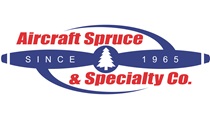
Opinion: Savvy Maintenance
Buyer Beware: If an airplane is listed for sale cheap, there’s always a reason

With a sigh, I braced myself and clicked the link. “This is one of the nicest twin Cessna 310Is out there,” the eBay ad proclaimed. Let’s think about this: It’s a 50-year-old, all-metal airplane, and Cessna built these aircraft with absolutely no internal corrosion proofing. This one is based in Baton Rouge, one of the highest corrosion-risk areas of the United States. It had sustained a gear-up landing awhile back, but somehow managed to avoid being declared a constructive total loss by the owner’s insurance carrier. Oh, and it has 7,639 hours on the airframe. “But don’t let the time scare you because it is well-maintained,” noted the listing; “I take my family and grandbabies in this bird.”
The seller was obviously desperate to (ahem) liquidate this asset: “This is a no reserve auction and the plane will be sold,” he wrote in his eBay listing. “However, keep in mind, I will only except [sic] cash—and that means hundred dollar bills only—so don’t bid if you can’t come up with the cash.”
I’m not making this up.
I replied to Danny’s email as diplomatically as I could: “I would certainly encourage you not to buy this airplane. It’s an early model, high-time airframe with damage history, based in an extremely high-corrosion area. The owner is desperate to get rid of it, probably because it’s eating him out of house and home. Please realize that no matter how low the selling price for this aircraft is, it will be merely a small down payment on your total cost of ownership (which could be astronomical). The seller is holding a fire sale because nobody wants an aircraft like this. I wouldn’t touch it with a 10-foot pole.”
As I was typing this, I was experiencing flashbacks to a situation more than a decade earlier that had an unhappy ending for an aircraft owner I’ll call Oscar.
Oscar’s story
In early 2004, Oscar purchased a 1965 Cessna 320 Skyknight—the turbocharged version of the 1965 Cessna 310I listed on eBay—and based it at an airport in northern New Jersey. In August, the airplane came due for its first annual inspection on Oscar’s watch, so he took the airplane to a shop in eastern Pennsylvania that I’ll call High Maintenance Aviation.
Initially, the shop told Oscar that its flat-rate charge for the annual inspection was $2,160, and that he could expect a bill of “around $2,500 barring any major problems.” That figure wouldn’t pass the laugh test with any experienced twin owner, but Oscar was a newbie and didn’t know any better.
As the inspection progressed, and more and more airworthiness discrepancies were uncovered, the shop’s estimate predictably was revised upward to $4,000, then $8,000, then $14,000, and finally $18,000. With increasing reluctance, Oscar approved each of the increased estimates and instructed High Maintenance to proceed with the necessary repairs. He even sent the shop a $10,000 deposit.
Three months passed, and when the airplane still was not ready Oscar called the shop to get a status report. He spoke to an IA—I’ll call him Ike—who told him that they were still working on the airplane and that the bill would be “a bit more than $18,000” but didn’t cite a figure. Finally, in January 2005—nearly five months after the airplane first went into the shop—Ike phoned Oscar to say that the airplane was ready, and that the final bill was about $46,000!
Oscar protested that this was $28,000 more than the highest estimate he’d received, and that he had no intention of paying this outrageous invoice. High Maintenance sent Oscar an adjusted invoice for $42,626.50. Oscar was a member of the AOPA Legal Services Plan, and arranged for an aviation attorney to send the shop a “lawyer letter.” After an exchange of lawyer letters, Oscar ultimately agreed to pay $30,000 and High Maintenance agreed to release the airplane. Oscar licked his wounds, chalked up the painful ordeal to experience, and figured that his long and costly nightmare was finally over. As it turned out, however, Oscar’s nightmare was just beginning.
Just out of annual
On the ferry flight home from High Maintenance, Oscar was dumbfounded to discover that the Cessna 320’s left engine wouldn’t hold manifold pressure at altitude, a problem he’d squawked when he first put the airplane in the shop. After what had transpired, Oscar was not about to take his wounded bird back to High Maintenance, and emailed me asking for advice.
I referred Oscar to someone I’ll call George Goodguy, one of the best twin Cessna mechanics in the northeast United States. Oscar telephoned George, described his turbocharging problem, and asked whether he could look at it. “Sure,” said George. “It’s probably just a loose hose clamp or something. I’m sure we can get it solved for you.” Oscar flew the airplane to George, who towed it into the maintenance hangar. But before George even got the cowlings removed from the left engine, he couldn’t help but notice problems with the airplane. Lots of problems. Serious ones.
The left engine nacelle was literally dripping with oil. Near the right wing tip tank, an excessively long sheet metal screw securing a fairing was screwed right into the aileron, restricting its movement. The rudder and elevators had rusty torque tubes and filthy control linkages. Numerous skin panels and other sheet metal components were cracked and badly corroded. Everywhere George looked on this airplane, he could see serious airworthiness issues.
When George got the left engine uncowled, things went from bad to worse. The exhaust system was nothing short of a life-threatening disaster. Fuel and oil lines were loose. The oil cooler was leaking oil like a sieve. Heat shields were missing. Engine cooling baffles were broken and cracked. Cotter pins and safety wire were missing everywhere. The aircraft was literally a flying deathtrap.
George told Oscar that he’d better rent a car to get home to New Jersey.
It shocked him that any shop or mechanic would sign off an annual inspection on an aircraft in such abysmal condition.Mere words could not do justice to the horrendous condition of Oscar’s airplane. George got out his camera and started taking photos of some of the most egregious problems he found on Oscar’s just-out-of-annual airplane. If you’re curious, I’ve posted an online photo gallery of some of what George found.
George was horrified. He phoned High Maintenance Aviation and asked to speak to Ike, but was told that Ike no longer worked there and had taken a job with another shop in another state. George asked High Maintenance to send him a copy of its detailed work order for Oscar’s annual, but the shop refused to cooperate.
Call the cops
George has maintained airplanes for 42 years and there wasn’t much he hadn’t seen before, but Oscar’s airplane was one of the worst he’d ever laid eyes on. It shocked him that any shop or mechanic would sign off an annual inspection on an aircraft in such abysmal condition. He was mad.
George phoned his local FSDO and left a voicemail for his principal maintenance inspector (PMI), asking that he come over and look at this aircraft. After several days of telephone tag, George reached his PMI in person, but the inspector seemed reluctant to get involved, explaining that the FSDO was overloaded and understaffed. George escalated the matter to the PMI’s supervisor.
Ultimately, both the PMI and his supervisor paid a visit to George’s shop to look at Oscar’s airplane. The way George tells it, they slowly walked around the uncowled airplane, with eyes dilated in shock and voicing a steady stream of expletives as they discovered one serious airworthiness discrepancy after another. George filled in the background of how the aircraft had just come out of a five-month annual inspection, and showed the FSDO people the relevant maintenance logbook entries. They shook their heads in disgust.
“So what are you going to do about this?” George asked the FSDO employees.
“I’m not sure there’s anything we can do,” they replied, shaking their heads. They explained that trying to pursue an enforcement action against Ike would be a bureaucratic nightmare, given that both High Maintenance and Ike were out of their jurisdictions; both were in a different FAA region, and High Maintenance and Ike were now in different districts within that region.
To make matters worse, High Maintenance was not a Part 145-certified repair station, so the shop itself was not legally responsible for performing Oscar’s annual inspection. Ike the IA was personally responsible; it was his signature in the logbooks. “But if we try to bring an action against Ike for all these airworthiness discrepancies,” the PMI explained to George, “he’ll simply claim that none of those discrepancies existed when he inspected the aircraft, and must have developed afterwards.” Unless the FAA could somehow prove that the aircraft was unairworthy when Ike signed off the annual, it wouldn’t have a case.
When George told me what his FSDO folks said, I was flabbergasted. I related the story of Oscar’s annual and George’s exchange with his FSDO folks to my own PMI, who pretty much confirmed what George’s had said. Under FAA regulations, an IA’s certification that an aircraft is airworthy is valid only until the ink dries on his logbook entry. No matter how unworthy an aircraft may subsequently be found to be, the FAA cannot take action against the IA who signed off the last annual unless it can prove that the aircraft was unairworthy at the time of the inspection—and that’s often hard to do.
Epilogue
George escalated the matter up the FAA chain of command and ultimately succeeded in getting Ike’s local FSDO to open an investigation, but I never heard whether Ike was sanctioned. Oscar was talking to his lawyer about the possibility of bringing a civil lawsuit against High Maintenance, pessimistic that his Cessna 320 would ever fly again, but I don’t know if that lawsuit was filed. When I checked the FAA registry recently, I discovered that Oscar’s airplane was still shown there as active—but owned by somebody else. Apparently Oscar managed to unload it somehow. I guess P.T. Barnum was right: There’s a sucker born every minute.
Meantime, Danny decided not to submit his $35,000 bid on the Cessna 310I. I just checked the listing on eBay, and found that the auction attracted 142 bids and the airplane sold for $49,200—presumably in crisp “hundred dollar bills.” I hope the buyer has better luck with his purchase than Oscar did with his.
Mike Busch is an A&P/IA.
Email at mike.busch@savvyaviator



